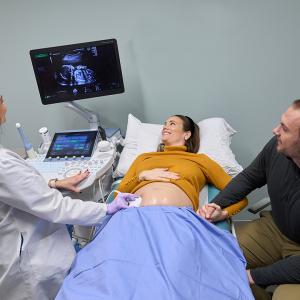Within Manhattan’s diverse population, the chronic and often debilitating autoimmune disease lupus affects Hispanic and Asian women more frequently than white women, according to a new study led by investigators at NYU School of Medicine.
The findings, published online in the September 11 issue of Arthritis & Rheumatology, also show that these female ethnic populations are more adversely affected by lupus and have significantly greater organ complications—namely kidney disease. Overall, the investigators found substantial disparities in prevalence and manifestations of lupus by race or ethnicity among borough residents.
The project was conducted through the Manhattan Lupus Surveillance Program (MLSP)—a collaboration between NYU Langone Health and New York City’s Department of Health and Mental Hygiene (DOHMH)—and supported by funding from the Centers for Disease Control and Prevention (CDC).
“Lupus can be difficult to diagnose,” says first study author Peter Izmirly, MD, an assistant professor in the Department of Medicine and Division of Rheumatology at NYU Langone and co-principal investigator of the MLSP. “Our findings should make healthcare providers more aware of the prevalence of lupus in these demographic groups, and hopefully make them consider the diagnosis, especially when patients come in with symptoms that could be consistent with lupus such as arthritis, rashes, and signs of kidney disease.”
Lupus, or systemic lupus erythematosus, is a chronic disease in which the body’s immune system attacks healthy tissues and organs. Symptoms include joint pain and swelling, fatigue, and a butterfly-shaped rash on the cheeks. Public health researchers know that women comprise 90 percent of lupus patients, with black women affected most disproportionately. But, estimates of prevalence and incidence of lupus in the United States vary greatly—and there is presently limited data for certain demographic groups.
Starting in 2004, CDC funded four state and city health departments, as well as the Indian Health Service (IHS), to better identify the incidence and prevalence of lupus. Results from two of these initial sites, the Georgia Lupus Registry and the Michigan Lupus Epidemiology and Surveillance Program, in addition to the IHS, provided estimates for prevalence in blacks, whites, American Indian, and Alaska Native populations.
The MLSP was designed, along with the California Lupus Surveillance Project, to also provide estimates of the incidence and prevalence of lupus specifically among Hispanic and Asian populations, two of the fastest-growing demographic populations in the U.S. The MLSP team reviewed medical records from 2007 through 2009 and estimated how many patients had lupus based on several disease classification criteria from medical organizations, as well as the diagnosis made by the treating rheumatologist.
They found that prevalence rates for whites (51.4 cases per 100,000 persons per year) and blacks (133.1 per 100,000 persons per year) were in line with estimates published by the Michigan and Georgia registries. However, in the MLSP registry, Hispanics and Asians were diagnosed with lupus more frequently than whites, and they had more aggressive disease.
Dr. Izmirly and his colleagues report that the prevalence rate for Hispanics was 84.6 per 100,000 overall and 142.7 per 100,000 among women. The prevalence rate for Asians was 75.5 per 100,000 overall and 118.5 per 100,000 among women.
One of the most burdensome complications of lupus is kidney disease. The MLSP study showed that 49.4 percent of Hispanics and 53.2 percent of Asians had kidney disease compared to 25.4 percent among whites.
These findings, the investigators say, underscore the importance of improving the diagnosis of lupus in these demographic groups.
“While this project highlights the disparities in lupus rates among Hispanic and Asian women, there is more work to do to determine the cause,” says senior co-author Hilary Parton, MPH, of the DOHMH and co-principal investigator of the MLSP. “This project will help support future efforts to expand awareness and improve access to care for all people at risk of lupus.”
Results from the California Lupus Surveillance Project were published simultaneously in the same issue of Arthritis & Rheumatology.
Dr. Izmirly’s and Ms. Parton’s co-authors on the MLSP manuscript include Isabella Wan, MD, MPH, Sara Sahl, MD, MPH, Jill P. Buyon, MD, and H. Michael Belmont, MD, at NYU Langone; Jane E. Salmon, MD, at Weill Cornell Medical College; Anca Askanase, MD, MPH, Joan M. Bathon, MD, and Laura Geraldino-Pardilla, MD, MSc, at Columbia University College of Physicians and Surgeons; Yousaf Ali, MD, at Icahn School of Medicine, Mount Sinai; Ellen M. Ginzler, MD, MPH, at State University of New York Downstate College of Medicine; Chaim Putterman, MD, and Caroline Gordon, MD, University of Birmingham, United Kingdom; and Charles G. Helmick, MD, at the CDC’s Arthritis Program.
This project was supported by cooperative agreements between the CDC and DOHMH (U58/DP002827).

